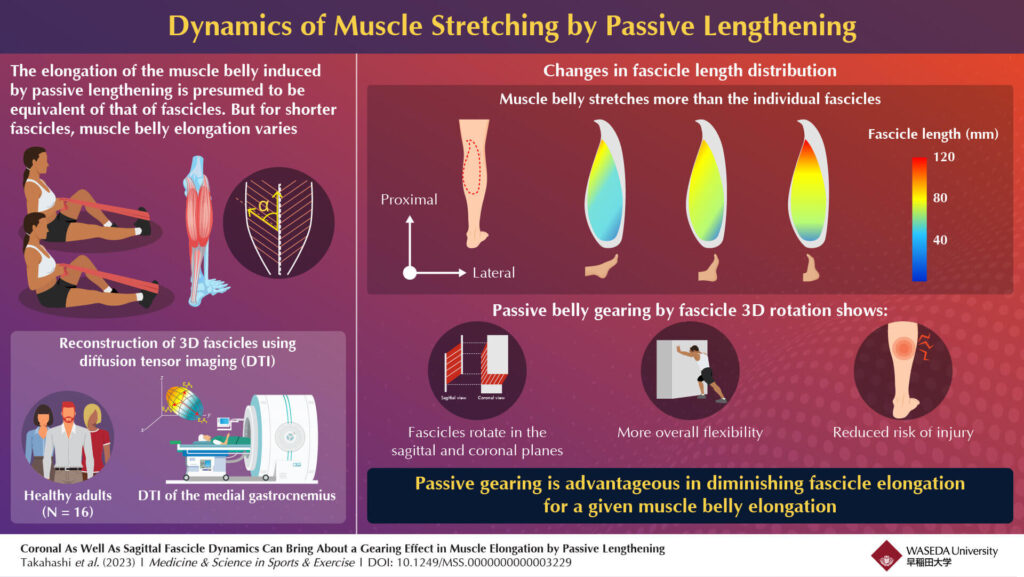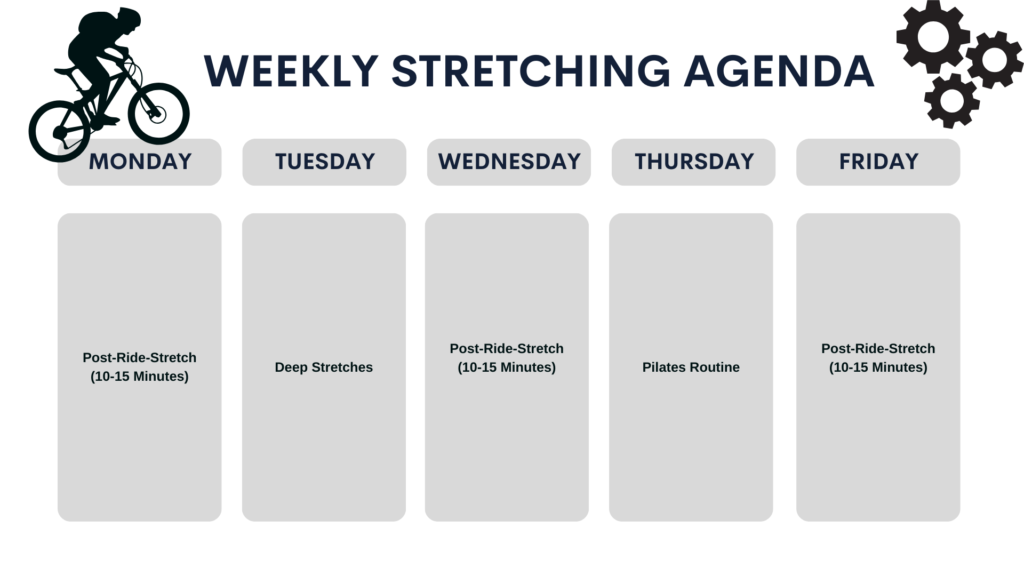Incorporating stretches for bike riding into your routine isn’t just about enhancing performance; it’s a fundamental aspect of recovery and injury prevention. Deep stretching, in particular, plays a pivotal role in ensuring your muscles remain flexible, resilient, and ready for the trails ahead. This guide delves into the world of deep stretching, offering 5 key techniques that are tailored specifically to the needs of mountain bikers. Whether you’re winding down after a rigorous ride or looking to maintain your body’s agility, these stretches will help elevate your riding experience to new heights.
Here you can jump right to the stretches.
Table of Contents
Introduction to Deep Stretching for Mountain Biking
What Is Deep Stretching and Why Is It Important for Mountain Bikers?
Deep stretching refers to exercises that aim to elongate and relax your muscles through slow, deliberate movements, holding each stretch for an extended period. For mountain bikers, these stretches are crucial because they target the deep tissues, improving flexibility, enhancing range of motion, and aiding in recovery after intense rides. Incorporating deep stretches into your routine can significantly reduce the risk of injuries and improve overall riding performance.
We are talking more in depth about the intersection of mountain biking and stretching in this article.
When Should Mountain Bikers Perform Deep Stretches?
The ideal time for deep stretching is post-ride when your muscles are warm and more pliable. This timing helps in maximizing the effectiveness of each stretch, allowing for a deeper release of muscle tension. Incorporating a deep stretching routine after every ride can significantly expedite the recovery process, ensuring you’re ready for your next adventure on the trails.
By understanding the what, how, and when of deep stretching for mountain biking, riders can better integrate these practices into their routines, leading to improved performance and reduced injury risk. Deep stretching isn’t just a recovery tool; it’s a key component of a well-rounded mountain biking regimen.
The Science Behind Deep Stretching and Recovery
What Happens to Your Muscles During Deep Stretching?
Deep stretching involves lengthening the muscle fibers and connective tissues, promoting flexibility and increasing blood flow to the muscles. This process not only helps in alleviating muscle tightness but also facilitates the removal of metabolic waste products that accumulate during intense physical activity, such as lactic acid. By improving circulation, deep stretching aids in faster muscle recovery and reduces soreness, making it an essential component of any mountain biker’s post-ride routine.

How Does Deep Stretching Aid in Recovery?
The enhanced blood flow and nutrient distribution resulting from deep stretching play a pivotal role in the recovery process. These stretches help repair micro-tears in the muscle fibers, which are common after strenuous exercises like mountain biking. By accelerating the healing process, deep stretching ensures that you can return to the trails sooner, with muscles that are stronger and more resilient.
Can Deep Stretching Improve Long-Term Mountain Biking Performance?
Absolutely. Regular deep stretching not only aids in immediate recovery but also contributes to long-term improvements in flexibility and range of motion. These enhancements can lead to better bike handling, increased power output during pedaling, and a reduced risk of injuries. Over time, this can significantly elevate your mountain biking skills and enjoyment of the sport.
Understanding the science behind deep stretching illuminates its critical role in muscle recovery and long-term performance for mountain bikers. By incorporating deep stretching into your routine, you’re investing in your body’s ability to perform at its best on every ride.
Preparation for Deep Stretching
What Do You Need to Start Deep Stretching?
Starting a deep stretching routine doesn’t require much equipment, but a few essentials can enhance your experience. A comfortable, non-slip yoga mat provides a stable surface, reducing the risk of injury. Additionally, stretching straps or resistance bands can help you achieve deeper stretches, especially if you’re just beginning and have limited flexibility. Comfortable clothing that allows for a full range of motion is also crucial, ensuring your stretches are effective and not hindered by restrictive attire.
Find more information about the best stretching equipment in our article “Equipment for Stretching Exercises Reviews: The Best Tools for Trailblazer Flexibility“.
How Should You Warm Up Before Deep Stretching?
Warming up your muscles before engaging in deep stretches is essential to prevent injuries and get the most out of your stretching session. A brief five minute warm-up, consisting of light aerobic activity like jogging in place or cycling on a stationary bike, can increase muscle temperature and blood flow, making them more pliable and receptive to stretching. This preparatory step is especially important if you’re stretching on a non-riding day when your muscles aren’t already warmed up from biking.
Linking to a video demonstrating a quick warm-up routine suitable for mountain bikers could be helpful.
What Is the Best Environment for Deep Stretching?
The environment in which you stretch can significantly impact the effectiveness of your routine. A quiet, comfortable space free from distractions allows you to focus on your stretches and the sensations in your muscles. Adequate room to move and a flat surface are also important to maintain balance and ensure proper form. If possible, choose an area with natural light and fresh air to enhance relaxation and overall well-being during your stretching session.
Preparing for deep stretching is straightforward but essential for a safe and effective routine. With the right equipment, a proper warm-up, and a conducive environment, you can maximize the benefits of deep stretching for your mountain biking recovery and performance.
5 Key Deep Stretches for Mountain Bikers
- Pigeon Pose for Hip Flexibility
- A step-by-step guide and the benefits specifically for mountain bikers.
- Seated Hamstring Stretch
- Instructions for performing this stretch, with a focus on its importance for pedal efficiency.
- Thoracic Spine Opener
- Detailed description and the significance of this stretch for upper body mobility.
- Butterfly Stretch for Groin and Hips
- How to execute this stretch effectively and its role in enhancing bike handling.
- Calf and Achilles Stretch
- Technique for targeting calf muscles and Achilles tendon, including the benefits for preventing cramps.
Find more Stretching Routines here.
Incorporating Deep Stretches into Your Recovery Routine
How Often Should Mountain Bikers Practice Deep Stretching?
Incorporating deep stretching into your recovery routine at least 2-3 times per week can significantly benefit mountain bikers, particularly after long rides or intense training sessions. Consistency is key to reaping the full rewards of stretching, including improved flexibility, reduced muscle soreness, and faster recovery. Over time, as flexibility increases, you may find it beneficial to include gentle stretches more frequently, even on rest days, to maintain and enhance muscle elasticity.

What Are the Best Deep Stretches for Post-Ride Recovery?
Focusing on stretches that target the major muscle groups used in mountain biking—such as the hamstrings, quadriceps, hip flexors, lower back, and shoulders—is crucial for effective post-ride recovery. Techniques like the Pigeon Pose, Seated Hamstring Stretch, and Thoracic Spine Opener are particularly beneficial. Each stretch should be held for 30 seconds to 2 minutes, allowing the muscle to relax and stretch deeply, enhancing recovery and flexibility.
Can Deep Stretching Help with Injury Prevention?
Yes, deep stretching plays a significant role in injury prevention for mountain bikers. By increasing flexibility and range of motion, deep stretches reduce the risk of muscle strains and joint stress. Furthermore, a well-rounded recovery routine that includes deep stretching can improve muscular balance and posture, both of which are vital for reducing the likelihood of overuse injuries and ensuring long-term biking enjoyment and performance.
Incorporating deep stretches into your recovery routine is a vital component of mountain biking that promotes flexibility, aids in muscle recovery, and helps prevent injuries. By dedicating time to stretch deeply and regularly, especially after demanding rides, you can maintain your body’s readiness for the challenges of mountain biking and ensure a smoother, more enjoyable riding experience.
Conclusion: Embracing Deep Stretching for Long-Term Benefits
Embracing deep stretching is not just about enhancing immediate post-ride recovery; it’s a long-term investment in your mountain biking journey. Regularly integrating deep stretches into your routine can lead to sustained flexibility, injury prevention, and improved performance. It’s a commitment to your health and enjoyment of mountain biking, ensuring you can tackle challenging trails with confidence and maintain your passion for the sport for years to come.
How Long Should Each Stretch Be Held for Optimal Benefits?
Ideally, each deep stretch should be held for about 30 seconds to 2 minutes. This duration allows the muscles to fully relax and elongate, providing maximum benefit from each stretch.
Can Deep Stretching Improve Riding Performance?
Yes, deep stretching can significantly improve riding performance. By enhancing flexibility and range of motion, riders can achieve better bike control, more efficient pedaling, and reduced fatigue, leading to overall improved performance on the trails.
Is Deep Stretching Suitable for All Mountain Bikers?
Deep stretching is beneficial for mountain bikers of all levels. Beginners may need to start with shorter durations and gradually increase as flexibility improves, while experienced riders can integrate deeper and more advanced stretches into their routines.



